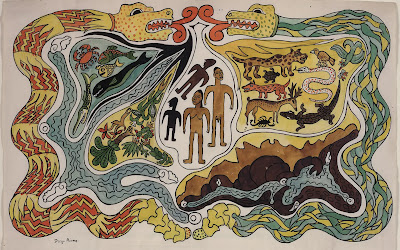Throughout history, humanity has looked to the skies for answers. From ancient myths to sacred texts, stories of beings from the heavens have shaped religions around the world. In recent decades, some researchers and theorists have asked a provocative question: Could these “divine” visitors have actually been extraterrestrials?
Heavenly Beings in Ancient Texts
Many religious scriptures describe powerful beings descending from the sky, glowing with light, riding in strange “chariots,” or possessing technology far beyond human understanding. These stories have led some to suggest that ancient people may have witnessed alien visitations but interpreted them through a spiritual or mythological lens.
Examples:
- The Bible: The Book of Ezekiel describes a flying object—often interpreted as a “wheel within a wheel”—that descends from the heavens, accompanied by strange beings. Some claim this could be an early account of a spacecraft.
- Hindu Texts: Ancient Indian epics like the Mahabharata and Ramayana speak of flying machines called Vimanas and wars involving divine weapons. Some researchers believe these could be references to advanced alien technology.
- Sumerian Tablets: The Sumerians, one of the oldest known civilizations, wrote about gods called the Anunnaki, who came from the sky. Some alternative historians propose that the Anunnaki were actually alien visitors who influenced human evolution and society.
Angels or Aliens?
In many traditions, angels are described as glowing beings who appear suddenly, deliver messages, and then vanish. They don’t need food, sleep, or travel by earthly means. Could ancient descriptions of angels be early encounters with extraterrestrial life?
Supporters of this theory argue that the physical characteristics and behaviors of these “messengers” align more with science fiction’s vision of aliens than with purely spiritual beings.
The Ancient Astronaut Theory
Popularized by authors like Erich von Däniken (Chariots of the Gods?), the ancient astronaut theory claims that alien beings visited Earth in ancient times and were mistaken for gods. According to this view, aliens helped humans with technology, built massive monuments (like the pyramids or Stonehenge), and even played a role in the development of religion and civilization.
Though widely criticized by mainstream scholars, the theory continues to capture the imagination of many people today.
Skepticism and Faith
Most religious scholars and historians argue that there is no solid evidence of alien encounters in ancient texts. They believe that these stories are symbolic, mythological, or theological in nature—not literal accounts of space visitors.
Still, the overlap between descriptions of divine beings and modern depictions of aliens continues to raise questions. Is it possible that religious experiences could have an extraterrestrial dimension? Or is this simply a modern interpretation of ancient spirituality?
A Modern Perspective
With advances in astronomy and the discovery of thousands of exoplanets, belief in extraterrestrial life has moved from fringe science to a serious area of study. Even religious leaders have begun to discuss the possibility of intelligent life beyond Earth. Some argue that discovering aliens would not destroy faith—it might expand it.
Pope Francis, for example, once said he would baptize an alien if it asked. This shows how even modern religions are beginning to explore how extraterrestrial life might fit into spiritual beliefs.
Whether aliens are truly part of our religious history or just a projection of our imagination, the idea challenges us to look at ancient stories with new eyes. It invites both believers and skeptics to ask deeper questions about where we come from, what we’ve seen in the skies, and what might still be out there.

